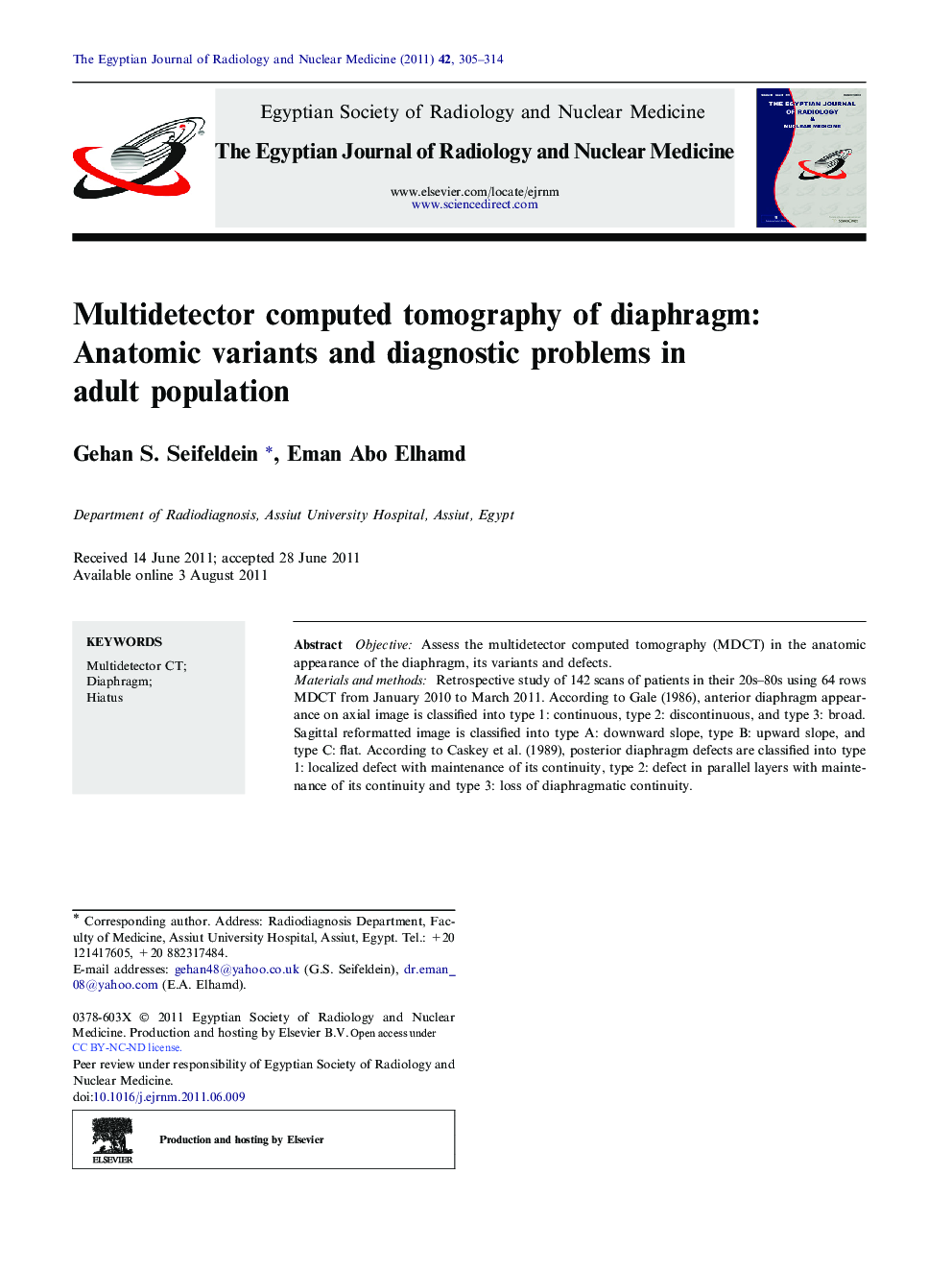| Article ID | Journal | Published Year | Pages | File Type |
|---|---|---|---|---|
| 4224535 | The Egyptian Journal of Radiology and Nuclear Medicine | 2011 | 10 Pages |
ObjectiveAssess the multidetector computed tomography (MDCT) in the anatomic appearance of the diaphragm, its variants and defects.Materials and methodsRetrospective study of 142 scans of patients in their 20s–80s using 64 rows MDCT from January 2010 to March 2011. According to Gale (1986), anterior diaphragm appearance on axial image is classified into type 1: continuous, type 2: discontinuous, and type 3: broad. Sagittal reformatted image is classified into type A: downward slope, type B: upward slope, and type C: flat. According to Caskey et al. (1989), posterior diaphragm defects are classified into type 1: localized defect with maintenance of its continuity, type 2: defect in parallel layers with maintenance of its continuity and type 3: loss of diaphragmatic continuity.ResultsAnterior diaphragm was assessed in 141 cases. On axial images, types 1, 2, and 3 were found in 36.9%, 41.1%, and 22.0% respectively. On sagittal reformatted images, types A, B, and C were found in 32.6%, 41.1%, and 26.2% respectively. One case had Morgagni hernia. Significant relationship between the types at the axial and sagittal images was found (r = 0.205, P < 0.05). 2.8% Posterior diaphragmatic defects. High significant relationship between the age and diameter of oesphageal hiatus was found (P < 0.05).ConclusionThe multiplanar capability of MDCT is adding a new scope of assessment of diaphragm and its variants.
